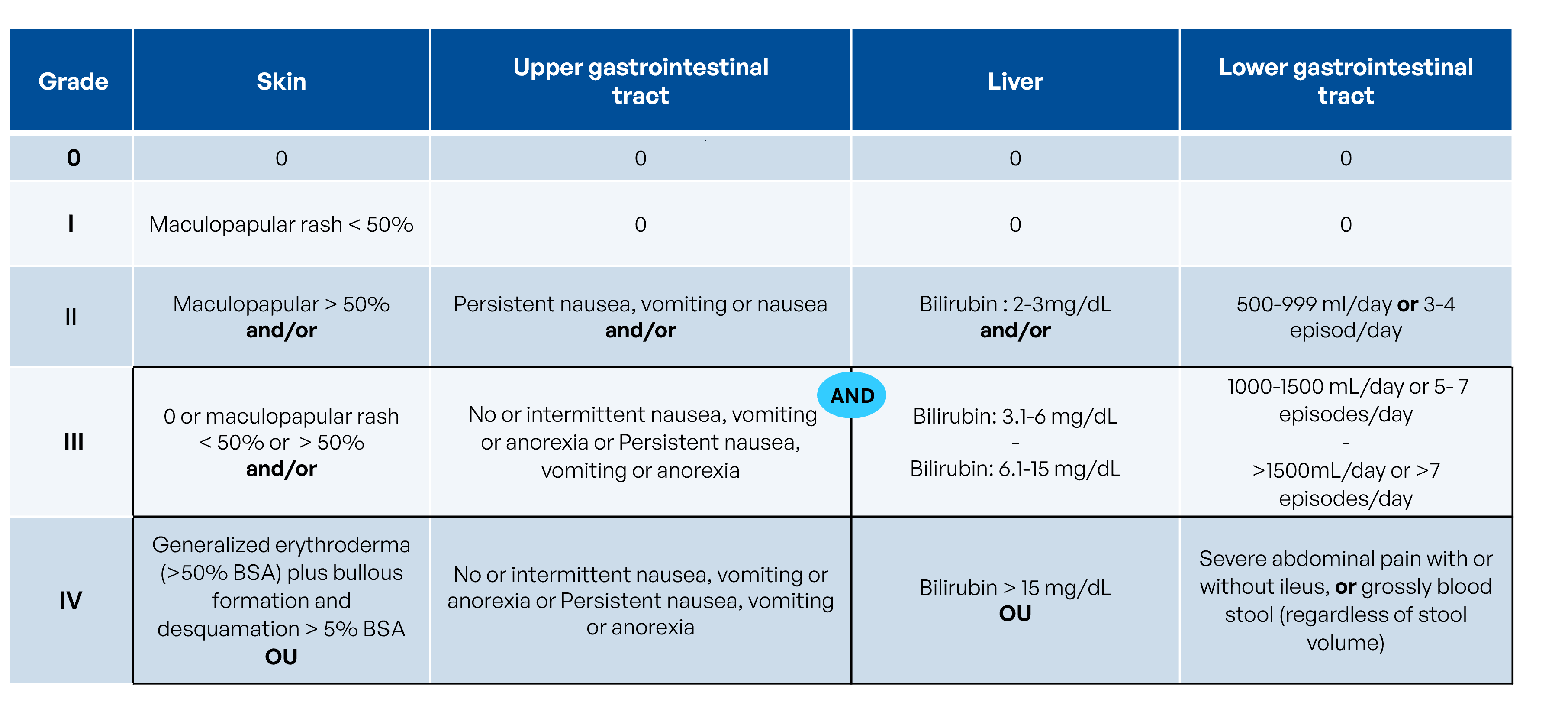Graft-versus-Host Disease (GvHD) is one of the potential complications following an allogeneic hematopoietic stem cell transplantation (HSCT). It is estimated that 30 to 50% of patients develop GvHD after an allogeneic HSCT.
There are two types of GvHD, distinguished notably by the timing of symptom onset: symptoms occurring within 100 days after transplantation are classified as acute GvHD, while those appearing later are considered chronic GvHD. The symptoms also differ between these two forms.
- Chronic GvHD presents with more diffuse symptoms. It can affect the skin, eyes, mouth, muscles, and gastrointestinal tract, and may lead to infections and breathing difficulties.
- Acute GvHD, on the other hand, primarily targets three organs: skin, liver, and gastrointestinal tract. Acute GvHD can be severe and rapidly fatal. It is one of the most feared complications following allogeneic HSCT and generally has a poorer prognosis.
During an allo-HSCT, despite careful donor selection based on HLA matching, the graft can attack the patient’s tissues, recognizing them as foreign.
The severity of GvHD is graded on a scale from 0 (no reaction) to 4 (severe reaction):


